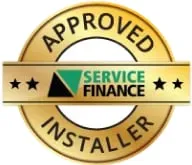Are you considering tackling oil furnace repair on your own? It’s important to weigh the pros and cons before diving into DIY repairs on such a crucial component of your home’s heating system. In this guide, we’ll explore the essential steps and considerations to help you decide whether you can handle the task or need to call in the experts.
Understanding Your Oil Furnace
Before starting any repair, it’s crucial to have a good understanding of how your oil furnace operates. Familiarize yourself with the main components such as the burner, heat exchanger, and blower. Understanding these parts and how they work together can help you identify potential issues and determine whether they’re within your capacity to fix. The burner mixes and ignites the oil, the heat exchanger transfers the heat to your home’s air, and the blower circulates this warm air throughout your house.
Additionally, recognizing signs of wear or malfunction in each component can give you a clearer idea of what might need attention. For instance, problems with the burner might include a weak flame or delayed ignition, while issues with the blower could result in varying air pressure or strange noises. Familiarity with these symptoms will help you communicate effectively with a professional if that step becomes necessary.
Identifying the Problem
Accurately diagnosing the issue is the first step in any repair process. Common problems include the furnace not burning, making strange noises, or poor heat output. Each of these symptoms can have multiple causes, so an organized approach to troubleshooting is essential. Start by checking the most accessible and common issues, such as an obstructed air filter or thermostat settings that might be incorrect.
Understanding the potential problems helps to narrow down the cause more efficiently. Refer to resources like the 7 Step Fall Oil Furnace Maintenance Checklist to guide your diagnosis procedure. This proactive approach can save time and potentially identify issues before they escalate, ensuring your heater is ready to provide comfort throughout the cold season.
When to Consider DIY Repairs
Some minor issues, like changing the oil filter or cleaning the burner nozzle, can be done by a confident DIYer. Assess the complexity of the problem to decide if it’s manageable on your own. If the issue appears straightforward, such as a dirty air filter or minor debris in the burner, quick fixes and regular maintenance can often restore your furnace’s functionality.
However, it’s crucial to acknowledge your limits. Always prepare with the necessary tools and safety precautions before attempting any repair. Detailed guides are available to safely address simple tasks, but for more intricate problems, re-evaluating your DIY approach is crucial.
Necessary Tools and Safety Precautions
Ensure you have the right tools for the job, such as wrenches, screwdrivers, and safety goggles. Always follow safety procedures and turn off the power and oil supply before beginning any repair. This step is non-negotiable to avoid accidents or damage during the repair process. Certain tools like a wire brush for cleaning components can aid in maintenance tasks, while a vacuum cleaner may assist in removing debris from various parts of the furnace.
Don’t forget about personal safety equipment. Protective gear like gloves and goggles is essential to shield against dust and any oil residue. Creating a clean and safe workspace also prevents unnecessary hazards.
Steps for Basic Maintenance
Regular maintenance like replacing air filters and checking thermostat settings can keep your furnace running efficiently. This can help prevent larger issues from developing. Change the air filter regularly to maintain air quality and ensure unobstructed airflow. Depending on your usage and home environment, air filter replacement may be necessary every one to three months.
Additionally, examining and cleaning components like the flue system and combustion chamber are vital. Refer to the comprehensive combustion analysis to boost the overall efficiency and performance of your heating system.
Lastly, keep an eye on your thermostat settings. Ensure they are properly configured to activate your furnace and maintain your desired indoor temperature. This straightforward check can avert more extensive operational problems and keep your furnace functioning optimally throughout the season.
Knowing When to Call a Professional
Certain repairs, especially those involving electrical work or complex mechanical issues, should be left to professionals. If in doubt, it’s always safer to seek expert assistance. For potentially hazardous issues such as gas leaks, complex wiring problems, or severe mechanical failures, contacting a professional repair service like Tommy Cool Air is advisable.
An expert can provide a comprehensive diagnosis and ensure your system operates safely and efficiently. Entrusting these complex tasks to skilled technicians mitigates risk to both the equipment and your home’s safety, offering peace of mind and reliable heating all winter long.
Key Takeaways for DIY Oil Furnace Repair
Deciding to take on oil furnace repair yourself can be a challenging but rewarding endeavor. Remember to always prioritize safety and consider consulting a professional if you’re unsure about any step. With the right tools, knowledge, and precautions, you can potentially manage minor repairs and maintenance on your own, but for more complex issues, professional help is your best bet.










